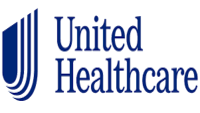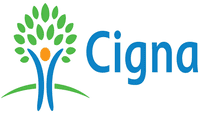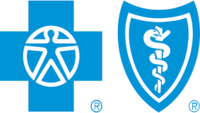HSA for America is dedicated to lowering health insurance costs for individuals, families, and small businesses across the country.
In this edition of our Family Financial Planning series, insurance expert Whitney Kline provides an overview of how to choose the best family health plan. She begins with a 10 step checklist on how to compare companies, coverage options, and provider networks. After that, she compares snapshots of the 4 largest family health insurance companies in the U.S.

How to Choose the Best Family Health Plans [10 Steps]
1.) See What Is Available in Your Area
There will be different health insurance companies to choose from based on your zip code. The quickest way to see what is available near you is to run an instant quote. Your local health insurance companies will appear on a list alongside the estimated premiums.
2.) See What’s Available Through Your Employer
Employer-sponsored group plans can be more affordable than purchasing through the open marketplace. If your company offers access to a group plan, get a copy of the summary of benefits so that you can compare it to what else is available.
3.) Know the Different Types of Insurance Plan
Being a savvy health insurance shopper means knowing all the lingo and abbreviations. Here are the 2 main plan types that you may encounter:
HMO [Health Maintenance Organization]
- Network: Must stay within a provider network, unless seeking emergency care.
- Specialists: Referral required from Primary Care doc
- Overview: Less freedom to choose providers, but typically lower out-of-pocket costs
PPO [Preferred Provider Organization]
- Network: Use the provider network for better rates, but out-of-network care is also available
- Specialists: In-network referrals are more affordable, but not required
- Overview: More providers to choose from and referrals aren’t required, but can me more expensive than HMOs
Catch up on the HSA for America Family Financial Planning Series:
The best time to buy life insurance might be different for everybody. But choosing the best time for you and your family is a simple process. This guide will explain how:
Other topics in our Family Financial Planning Series:
4.) Compare the Best Family Health Plan Networks
Health insurance networks are groups of medical providers and facilities that your company has contracted with. Depending on your plan type (HMO vs. PPO), you may have to stay within the network to get the best rates, or even to be covered at all.
Costs are always lower in-network because the rates are negotiated beforehand.
5.) See if You Can Keep Your Favorite Doctor (Or Find a Better One)
Health plan networks are about more than just saving money. If you are shopping for a better health insurance plan for your family, switching companies could mean losing access to your favorite family doctors and specialists.
Alternatively, you can compare networks by finding out which local doctors and providers are included in the network. Then, research those providers specifically to find out if they are a good match.
6.) Compare Out-of-Pocket Costs
Your family’s monthly health insurance premium is just the beginning. Here are the major out-of-pocket costs you can expect to pay alongside your monthly bill:
- Copay: A flat fee that is paid each time you or a family member receive healthcare. (For example, a $20 charge to visit your primary care doctor).
- Coinsurance: Similar to a copay, this is a percentage of a medical service that must be paid by the policyholder before the insurance company starts paying.
- Deductible: This is the amount that must be paid each year before your health plan starts paying. Once you meet your deductible, your plan should take care of the rest of your major costs.
- Out-Of-Pocket Maximum: The most that you will pay in one year for covered health care.
The deductible, coinsurance, copay, and out-of-pocket max will vary, both by company and by specific plan.
7.) Balance Your Premium with your Deductible
Generally speaking, a higher premium will mean lower copays and deductibles. The reverse is also true; High-deductible plans usually have the lowest premiums.
It’s tempting to choose the plan with the lowest monthly premium. But if you or a family member needs medical care, you will need to come up with the deductible right away.
8.) Evaluate Your Family’s Medical Needs
Your family’s health and wellness is the most important thing in the end. Make sure that your new family health plan will give you what you need, by considering the following:
- Does Anyone in Your Family Take Specific Medications? Every health insurance company has their own ‘formulary’, or list of prescriptions that are available. Switching health insurance carriers could affect which drugs are paid for. Note: All ACA health insurance plans are required to cover prescription drugs as one of the 10 essential benefits. But insurance companies can choose which pharmaceutical companies to source from.
- Are You Thinking of Starting a Family, or Having More Children? Maternity coverage and childbirth is also covered by the ACA, but exact coverage levels will vary from plan to plan. Anyone who is not enrolled in a health insurance plan could face steep costs … Low-income families can qualify for Medicaid or CHIP to help pay for maternity.
- Do You See Specialists Often? Having to meet with your Primary Care Physician for a referral every time you need to see a specialist can be a hassle. For example, someone with ongoing illnesses or medical needs might benefit from a PPO without a referral requirement.
9.) Check Your Expanded Health Insurance Subsidy
In 2021, the income cap for federal health insurance subsidies was lifted. Under current rules, even people making above 500% of the Federal Poverty Level can qualify for a premium tax credit to make health insurance even more affordable.
10.) Can’t Find the Best Family Health Insurance Plan? Consider a Family Healthshare Plan
Healthcare Cost Sharing, or just ‘Healthshare’, is an alternative health plan designed to lower monthly costs by as much as 50%. These are not insurance plans, but rather community-centric organizations that facilitate the sharing of medical bills among members.
Traditionally, healthshare programs like MediShare were only for members of the Christian faith. Today, health sharing is available to anyone that wants it, including individuals, families, and even small businesses.
Family healthshare plans could significantly reduce your monthly payment. However, they are most often only designed to cover the costs of large or emergency medical bills, like an unexpected trip to the E.R. Like health insurance, there is still an amount that you will need to pay out of pocket if something happens.
If you want to learn about health sharing, click here to read The Health Sharing Plans Comparison Guide [2026 Update].
Get Quotes on the Best Family Health Plans Available
Summary: Choosing the Best Family Health Plan
- See what plans are available in your area and compare instant quotes by entering your zip code.
- Consider an employer-sponsored group plan (if it’s one that you like)
- Know the difference between HMO and PPO networks
- Research the hospitals and facilities that are in each network
- Find out if the doctor you like is in-network
- Understand how out-of-pocket costs work with each plan
- Choose the right premium-to-deductible balance
- Evaluate your family’s specific medical needs
- See what kind of federal health insurance subsidy you qualify for
- Consider healthcare cost sharing if you can’t find an insurance plan that fits
Top Health Insurance Plans for Families – Compared & Reviewed
There are nearly one thousand health insurance companies operating in the U.S. The ones that are available in your area could vary a lot.
Here’s a look at the largest family health insurance providers that operate nationwide:
 UnitedHealthcare Family Plans
UnitedHealthcare Family Plans
A.M. Best Rating: A
Provider Network: 1.3 million +
With a massive provider network and a simplified plan structure, UnitedHealthcare is a popular option for families choosing a health plan. The Choice Plus plan makes it easy to see even more out-of-network providers without paying a penalty.
 Cigna Family Plans
Cigna Family Plans
A.M. Best Rating: A
Provider Network: 36,000+
Cigna is smaller than UnitedHealthcare, BCBS, or Humana, but it is highly competitive when it comes to health insurance for families. They have a higher number of specialized plan options for people that need a more tailored and specific type of coverage.
 Blue Cross Blue Shield Family Plans
Blue Cross Blue Shield Family Plans
A.M. Best Rating: BBB+
Provider Network: 390,000+
BlueCross BlueShield, or BCBS, is actually a collection of 36 different independent health insurance companies across the nation. Each BCBS company has slightly different plan options and coverage levels depending on where you live.
Overall, the BCBS network includes over 90% of practicing physicians nationwide.
 Humana Family Plans
Humana Family Plans
A.M. Best Rating: A-
Provider Network: 350,000+
With a large provider network and some unique plan options (like the new Simplicity, deductible-free plan) Humana continues to be a trusted provider of family health insurance plans. Humana also offers higher-tier plans designed with more comprehensive coverage.
Get a Quote for the Best Family Health Plan in Your Area
The only time of year that you can enroll in a family health insurance plan is during Open Enrollment, which runs from November 1st to January 15th each year.
But if you experience certain life situations, like losing your group plan, having changes in your income, getting married, or having a child, you can qualify for a Special Enrollment Period. This will allow you to sign up much sooner.
Need health protection even faster? Family healthshare plans are available year-round, with no enrollment periods to worry about.
Your no-cost Personal Benefits Manager can help you when you’re ready.



